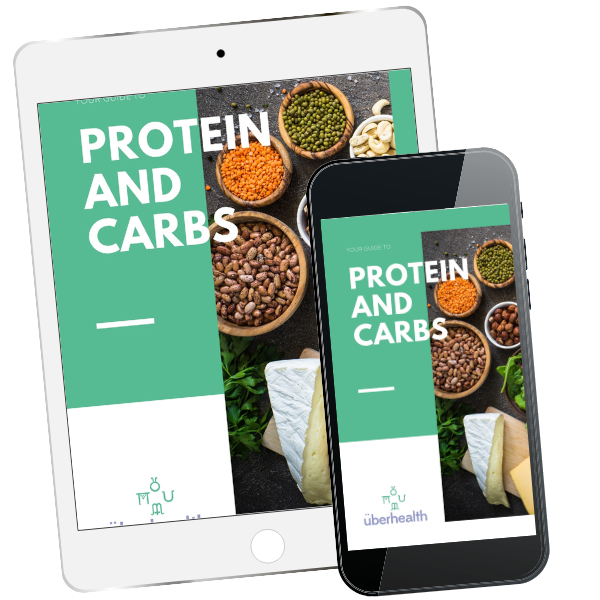Synchronising Nutrition and Exercise with the Menstrual Cycle: A Practitioner’s Guide to Optimising Women’s Health

The menstrual cycle is far more than a monthly inconvenience—it is a key player in women’s metabolism, energy levels, muscle function, and overall health. Yet, many women train and eat the same way every day without considering the powerful influence of their hormonal fluctuations.
For practitioners, understanding and applying cycle syncing—the practice of aligning diet, exercise, and recovery strategies with the phases of the menstrual cycle—can help female clients improve performance, manage energy fluctuations, and balance hormones more effectively.
This article explores how health professionals can tailor nutrition and exercise strategies to the different phases of the menstrual cycle, offering practical applications to help women harness their physiology for better health outcomes.
The Four Phases of the Menstrual Cycle and Their Metabolic Impact
Each phase of the menstrual cycle affects metabolism, insulin sensitivity, muscle recovery, and energy levels differently. By understanding these variations, practitioners can guide clients towards smarter nutrition and exercise choices.
1️⃣ Menstruation (Days 1-5) – Recovery and Restoration
🩸 What’s happening?
- The uterine lining sheds, and hormone levels (oestrogen and progesterone) are at their lowest.
- Many women experience fatigue, cramping, and reduced strength.
- Inflammation and fluid retention can impact joint mobility and exercise performance.
🥗 Nutrition focus:
- Iron-rich foods (lean meats, spinach, lentils) help replenish blood loss.
- Anti-inflammatory foods (turmeric, ginger, salmon) can help ease cramps.
- Magnesium and B vitamins (nuts, seeds, dark chocolate) support muscle relaxation and energy.
🏋️ Exercise recommendations:
- Gentle movement: Walking, stretching, yoga, and mobility work.
- If energy allows: Low-intensity resistance training or bodyweight exercises.
- Avoid high-intensity workouts if fatigue is high.
2️⃣ Follicular Phase (Days 1-13) – Building Strength and Endurance
🌿 What’s happening?
- Oestrogen rises, boosting energy, mood, and insulin sensitivity.
- The body becomes more efficient at using carbohydrates for energy.
- Recovery time improves, making this phase ideal for progressive training.
🥗 Nutrition focus:
- Lean proteins (chicken, tofu, eggs) support muscle repair.
- Complex carbohydrates (quinoa, brown rice, fruit) provide fuel for strength and endurance.
- Healthy fats (avocado, olive oil) support hormonal function.
🏋️ Exercise recommendations:
- Strength training: The best time for heavier resistance training or power-based workouts.
- Endurance: Running, cycling, and swimming feel easier due to improved energy efficiency.
- Skill-based training: Cognitive function is at its peak, making this an ideal time for learning new techniques.
3️⃣ Ovulation (Day 14) – Peak Performance
🔥 What’s happening?
- Oestrogen and luteinising hormone peak, increasing strength, power, and motivation.
- Women may feel more competitive, social, and energised.
- However, ligaments loosen, increasing the risk of injury.
🥗 Nutrition focus:
- Protein intake should remain high (salmon, beans, eggs) to support muscle recovery.
- Hydration is critical to prevent dehydration-related fatigue.
- Antioxidant-rich foods (berries, leafy greens) help with post-workout inflammation.
🏋️ Exercise recommendations:
- High-intensity interval training (HIIT): Sprinting, plyometrics, CrossFit.
- Competitive sports: Reaction time and coordination are at their best.
- Strength training: Heavy lifting and compound movements.
- Injury prevention: Due to increased joint laxity, practitioners should emphasise proper warm-ups and mobility work.
4️⃣ Luteal Phase (Days 15-28) – Managing Energy and Recovery
🌙 What’s happening?
- Progesterone rises, increasing body temperature and fluid retention.
- Energy levels may decline, making high-intensity workouts feel harder.
- Cravings for carbs and sugar increase as the body prepares for menstruation.
🥗 Nutrition focus:
- Complex carbohydrates (sweet potatoes, oats) help stabilise blood sugar and prevent mood swings.
- Magnesium-rich foods (dark chocolate, nuts) reduce bloating and muscle cramps.
- Adequate protein (chicken, fish, legumes) prevents muscle breakdown.
🏋️ Exercise recommendations:
- Moderate workouts: Swimming, Pilates, and light strength training.
- Deload week: If energy is low, consider reducing training volume.
- Prioritise recovery: Stretching, foam rolling, and extra sleep.
5 Ways Practitioners Can Help Clients Implement Cycle Syncing
- Educate clients about tracking their cycle and recognising symptoms related to each phase.
- Develop personalised nutrition plans that align with their hormonal changes.
- Adjust exercise recommendations based on energy availability and recovery needs.
- Use wearable technology (apps and trackers) to monitor cycle phases and adjust accordingly.
- Encourage self-awareness so clients can modify workouts and nutrition based on how they feel.
Want to Learn More? Master Cycle Syncing with Leading Experts
For practitioners, athletes, and health-conscious women, understanding the connection between hormones, metabolism, exercise, and nutrition is key to optimising health and performance.
🔍 The "Menstrual Cycles and Metabolism" workshop, led by Kira Sutherland and Lara Briden, offers expert insights, research-backed strategies, and practical applications for:
- Training and fuelling in sync with the menstrual cycle
- Understanding how female hormones affect metabolism and performance
- Distinguishing between PCOS and hypothalamic amenorrhea
- Achieving symptomless periods through diet and lifestyle
🎓 Access the training here: Menstrual Cycles and Metabolism Workshop
Cycle Syncing for Metabolic Health
Supporting women in aligning their nutrition and exercise with their hormonal cycles is a game-changer for energy, performance, and long-term health.
Rather than fighting against hormonal shifts, women can learn to work with their physiology to optimise recovery, reduce stress, and prevent burnout.
For practitioners, helping female clients understand cycle syncing can lead to better adherence, fewer injuries, and improved metabolic health—making it one of the most powerful tools in women’s health and sports nutrition today.
Summary of Key Terms and Nutrients
- Estrogen: A primary female sex hormone responsible for the development and regulation of the reproductive system and secondary sexual characteristics. (ncbi.nlm.nih.gov)
- Progesterone: A hormone that regulates the condition of the endometrium (the lining of the uterus), playing a vital role in the menstrual cycle and pregnancy. (ncbi.nlm.nih.gov)
- Luteinizing Hormone (LH): A hormone that triggers ovulation and stimulates the secretion of estrogen and progesterone. (ncbi.nlm.nih.gov)
- Follicular Phase: The phase of the menstrual cycle during which follicles in the ovary mature, ending with ovulation. (ncbi.nlm.nih.gov)
- Luteal Phase: The phase after ovulation when the body prepares for a possible pregnancy; if pregnancy does not occur, this phase ends with menstruation. (ncbi.nlm.nih.gov)
- Cycle Syncing: The practice of aligning diet, exercise, and lifestyle habits with the phases of the menstrual cycle to optimise health and well-being. (healthline.com)
FREE RESOURCE


